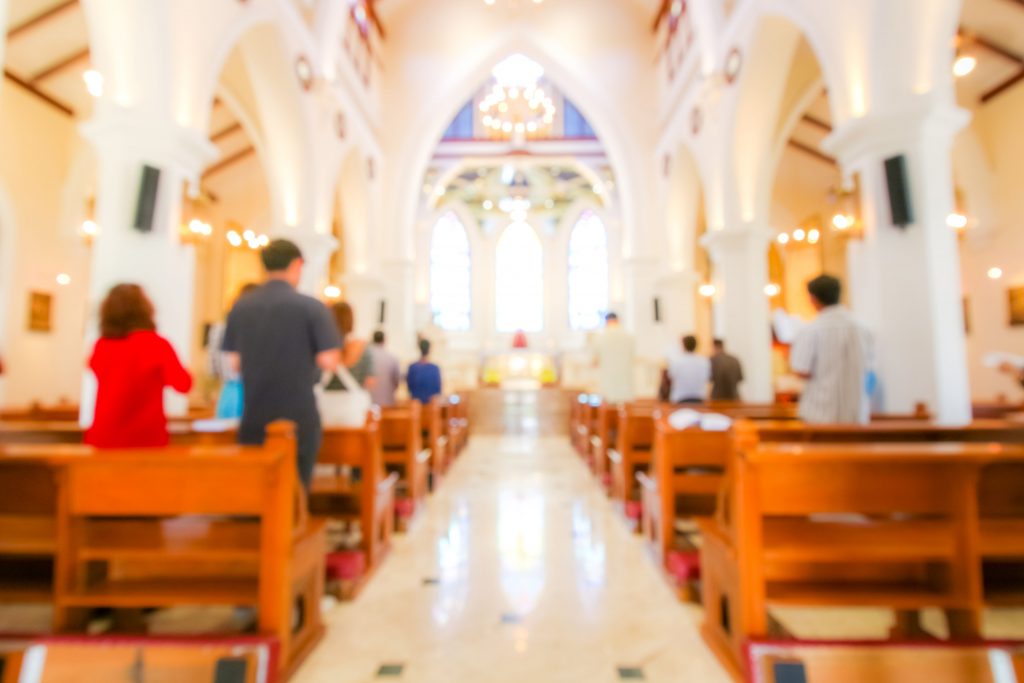Preparing liturgy in your parish, as a liturgy committee, is all about reflecting on, discussing and unfolding or enlarging the symbols and the symbolic actions of the Mass. The liturgy can be thought of in four basic movements: gathering, listening, responding and going forth. Let’s examine first the way your community gathers.
Because God came into our world in and through Jesus Christ on behalf of all people, hospitality is at the foundation of everything we do as Church. All are welcome! Each parish in our archdiocese needs to be sure that a feeling of warmth and welcome emanates out to everyone entering the church building for Mass, so, during the week, the custodian and seasonal environment committee have prepared the worship space in a way that is clean, orderly, simple and reflective of the liturgical season. Musicians and cantors have rehearsed and prepared their music and are ready to lead and support the community’s song without distraction.
On the day of Mass, and at least 30 minutes before it begins, the sacristan prepares the vessels, vestments, books, hosts and wine. At least 15 minutes before Mass, the smiling and friendly ushers have made the entrances of the church ready, and are watching for any members with special needs whom they might assist. The smiling and friendly greeters hand out the worship aids (if there are any), and engage people entering the church in brief conversation.
Everyone who comes to participate in the liturgy needs to feel that their own presence on this Sunday is essential to making this celebration whole and complete. The presider is vested and at the main entrance of the church building greeting people as they arrive. Assigned liturgical ministers have checked in 15 minutes before Mass begins, and are preparing themselves prayerfully for their service to the community. Five minutes before Mass begins, the presider, deacon, lectors and altar servers are getting ready to walk in the opening procession.
“The purpose of the introductory rites is to bring the assembly into the presence of the Lord. Thus, the first authentically liturgical act that the assembly is called to carry out is to approach God’s presence.” (“The Spiritual Meaning of the Liturgy,” p. 26, Goffredo Boselli, Liturgical Press, 2014).
From the first note sounded to the last, our gathering song needs to be strong and full. The sung participation of every member is necessary to the whole body. It is the language of music that allows us to be one voice, one song of praise. The music needs to last a long time so that the community can know and feel and absorb the unity that their one voice reveals.
The procession moving toward the altar carries the community forward into the mystery of God revealed in this moment. We place ourselves as one body in the presence of God. This is holy ground, a time and place set apart for God and God’s people. The processional cross leads our journey forward because, as Father Patrick Mullen says, “we know who we follow.” The deacon (the lector, in the absence of a deacon) carries the Book of the Gospels, solemnly in the opening procession, “in a grand gesture of being held high before the entire assembly, until reaching the altar, the heart of the assembly.” (Boselli, p. 10)
The Book passing through the assembly is the passage of God through the midst of God’s people. “The gesture is in fact the most eloquent icon with which the liturgy manifests the intrinsic unity that exists between the Scripture and the mystery of the altar, the Eucharist.” (Boselli, p. 11) The Word became flesh and still dwells among us and within this assembly gathered.
What follows the procession and song is the Penitential Act. In this moment, we acknowledge ourselves as sinners who seek to know God’s mercy. God’s forgiveness calls us to turn away from our sin and renew our path to holiness. And because our God is merciful, we sing Glory to God. In these sung words, we find the substance and purpose of our worship — we praise, bless, adore, glorify and thank our God as the Most-High Jesus Christ, with the Holy Spirit, in the glory of God the Father.
When our glory-song has ended, the presider calls out: “Let us pray,” and we stand together in silent awe. Our yearning for God has moved us from our everyday worldliness into a holiness that will renew us and nourish us. The presider then offers the Collect or Opening Prayer. These few words reflect the yearning of a people seeking to be made holy and worthy — one heart, one mind, one body in Christ. The gathering ritual finishes as we sit, ready to hear the proclamation of God’s Word.

